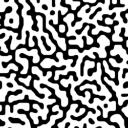Yahoo Answers is shutting down on May 4th, 2021 (Eastern Time) and the Yahoo Answers website is now in read-only mode. There will be no changes to other Yahoo properties or services, or your Yahoo account. You can find more information about the Yahoo Answers shutdown and how to download your data on this help page.
10 Answers
- atsuoLv 66 years agoFavorite Answer
Let the n-th term of this sequence be a(n) , I found that
a(1) = 6*3^(1-1) + 1 + 3 = 10
a(2) = 6*3^(2-1) + 2 + 3 = 23
a(3) = 6*3^(3-1) + 3 + 3 = 60
a(4) = 6*3^(4-1) + 4 + 3 = 169
a(5) = 6*3^(5-1) + 5 + 3 = 494
So , I think a(n) = 6*3^(n-1) + n + 3 .
Therefore , a(7) = 6*3^(7-1) + 7 + 3 = 4384 .
- RobertLv 76 years ago
The only thing I'm coming up with is:
23 = 3 x 10 - 7 (term # 2)
60 = 3 x 23 - 9 (term # 3)
169 = 3 x 60 - 11 (term # 4)
494 = 3 x 169 - 13 (term # 5)
Looks like you have to keep this pattern
going until you hit the 10th term
- 6 years ago
23 = 3 x 10 - 7 (term # 2)
60 = 3 x 23 - 9 (term # 3)
169 = 3 x 60 - 11 (term # 4)
494 = 3 x 169 - 13 (term # 5)
follow this pattern until you reach the 7th term
Source(s): data analysis portion of Algebra 3 - Randy PLv 76 years ago
Well it's not an arithmetic sequence (the differences are growing) and it's not a geometric sequence (the ratio between terms is not a constant).
Let's take a look at the differences and see if there's a pattern.
13, 37, 109, 325,...
Hmm. Each difference is a little less than 3 times the previous one.
13 * 3 = 39. Subtract 2 to get 37
37 * 3 = 111. Subtract 2 to get 109
109 * 3 = 327. Subtract 2 to get 325.
So the next difference will be 327*3 - 2, and the next difference will be 3 times that minus 2.
- ?Lv 76 years ago
Let
P(n): 10.....23.....60.....169.....494......
T(n):......13.....37.....109.....325....
u(n)............24.....72.......216...
=>
P(5)=494
T(4)=325
u(3)=216=24*3^2=u(1)3^2
=>
p(5)=p(4)+T(3)+u(1)3^2
=>
p(n)=p(n-1)+T(n-2)+u(1)3^(n-3)
is the general expression
=>
p(6)=494+325+24(3^3)=1467
=>
p(7)=1467+(1467-494)+24(3^4)=4384
- JLv 76 years ago
2848, because if a(n) = 4n^4 - 32n^3 + 104n^2 - 135n + 69, then a(1) = 10, a(2) = 23, a(3) = 60, a(4) = 169, a(5) = 494, .... , so just plug in n=7.
- 6 years ago
10, 23,60,169,494,1477,4404
first order differences between terms are 13,37,109,335,983,2927
Second Order difference between terms 24,72,216,648,1944
second order differences are multiples of three so 216*3 = 648 and 648*3= 1944
335+648+494 = 1477 this 6th term
1944+983+1477=4404
- PhilipLv 66 years ago
f(n) = 10,23, 60,169, 494,1467, 4384
d1(n) = 13,37,109,325, 973,2917, 8749
d2(n) = 24,72,216,648,1944,5832,17496.
The breakthrough occurs when one recognizes
that d2(n) = 24[3^(n-1)], n=1,2,3,..... Then one
reverse generates d1(n) and f(n).
- Ahmed AbaLv 66 years ago
10,(10.3-7),(23.3-9), (60.3-11),169.3-13),(494.3-15),(1494,3-17),...
10,23,60,169,494,1494,5390



